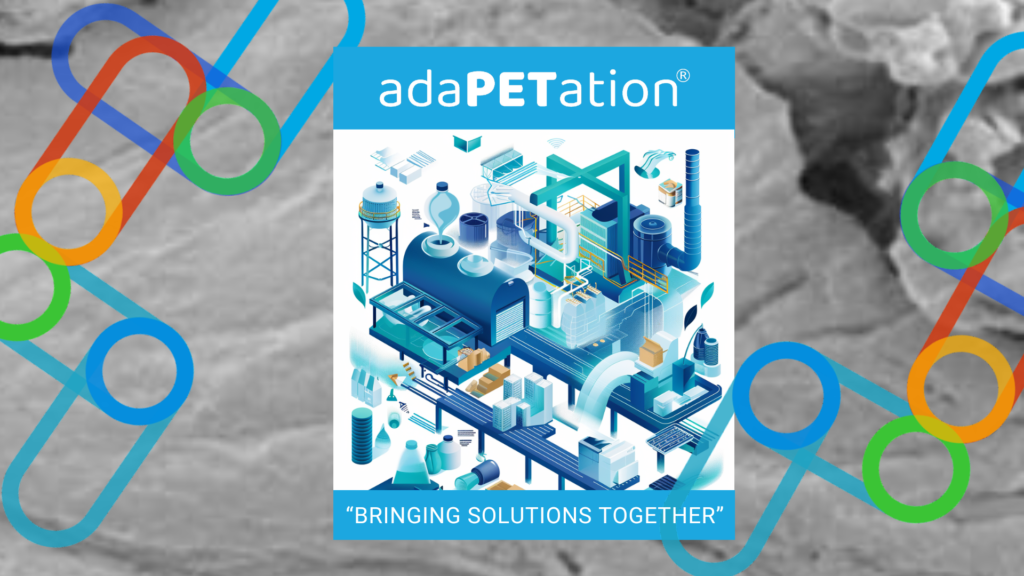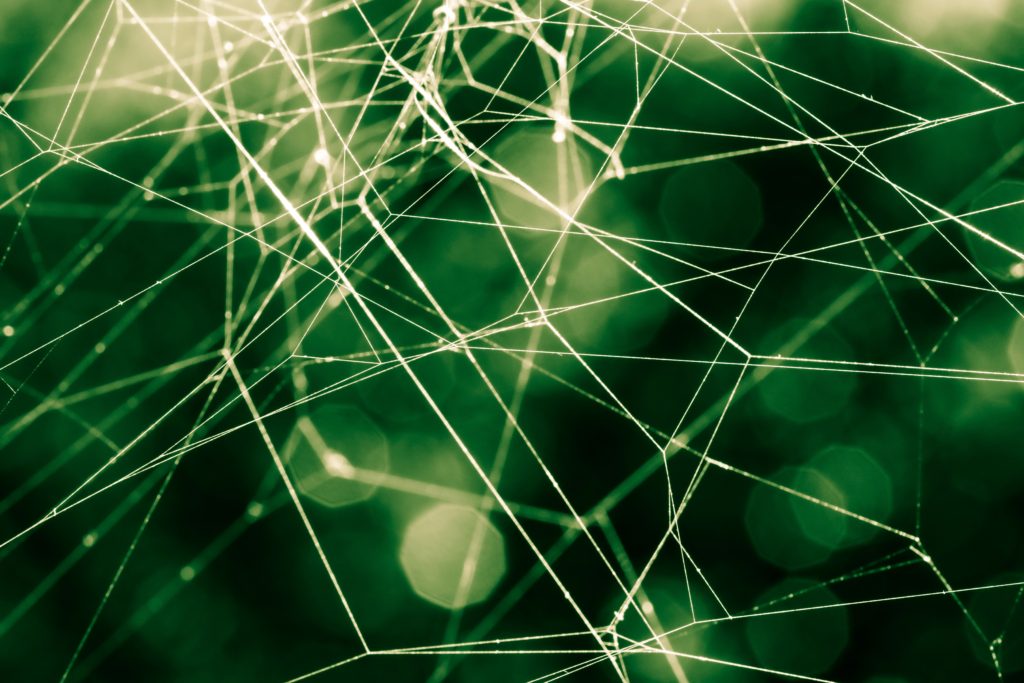
Reimagining PET plastic production through a systems model integrates renewable feedstocks, alternative energy, closed-loop manufacturing, and advanced recycling. By embracing eco-design, biomimicry, green logistics, and collaborative networks, we can create a sustainable PET production cycle that minimises environmental impact and promotes resource efficiency.

In the quest for a more sustainable future, the production and life cycle of PET (Polyethylene Terephthalate) plastic must be reimagined through a systems approach. By incorporating principles from nature, leveraging innovative technologies, and utilising systems thinking, we can develop a comprehensive model for PET plastic production that aligns with regenerative practices and minimises environmental impact by adopting a nested systems approach into its thinking.
1. Raw material sourcing:
Renewable feedstocks:
Bio-based Ethylene Glycol: transitioning from petroleum-based to bio-based feedstocks such as plant-derived ethylene glycol can significantly reduce the carbon footprint of PET production. Coca-Cola’s PlantBottle, which uses bio-based MEG (monoethylene glycol) from sugarcane, is a prime example. Other initiatives by packaging companies like PlastiPak have focused on carbon capture to increase production of bio-based feedstocks and help other industries to reduce their carbon footprints. This shift helps in reducing reliance on fossil fuels and promotes the use of renewable resources.
Sustainable extraction:
Ethical Sourcing: ensuring that raw materials are sourced sustainably involves minimising land and water use and implementing fair trade practices. Supporting local communities involved in feedstock production not only promotes sustainability but also enhances social equity.
2. Energy inputs:
Alternative energy:
Renewable energy integration: Utilising renewable energy sources such as solar, wind, and hydroelectric power in PET production facilities can drastically reduce greenhouse gas emissions. Imagine a PET manufacturing plant powered entirely by solar panels and wind turbines, exemplifying a significant reduction in the carbon footprint.
Energy efficiency:
Advanced technologies: implementing energy-efficient technologies and practices, such as high-efficiency electric motors and heat recovery systems, can significantly lower overall energy consumption. This not only reduces operational costs but also lessens environmental impact. Using resonance and nanotechnologies to create greater efficiencies in the cooling process have also offered considerable cost and energy savings.
3. Manufacturing process:
Closed-loop systems:
Waste minimisation: Developing closed-loop manufacturing processes where waste and by-products are minimised and reused within the system is crucial. For instance, recycling process water and chemical solvents can reduce waste and emissions, creating a more sustainable production cycle.
Advanced catalysis:
Catalytic innovations: using advanced catalytic processes, like enzyme-based catalysis, can improve reaction efficiencies and reduce the need for excessive heating. This not only lowers energy requirements but also enhances reaction specificity, making the process more environmentally friendly.
4. Product design:
Eco-design principles:
Lightweight and durable: incorporating eco-design principles to create PET products that are lightweight, durable, and easily recyclable can reduce material use. Designing bottles with thinner walls without compromising strength is an example, promoting resource efficiency, or creating multi-layer films that are easier to recycle.
Biomimicry:
Nature-inspired designs: using nature-inspired designs can enhance product functionality and sustainability. For example, beetle shell-inspired water harvesting features on PET bottles can help collect and store water in arid regions, turning packaging into a life-sustaining resource.
5. Distribution and logistics:
Optimised packaging:
Space-efficient solutions: developing packaging solutions that minimise weight and volume, such as collapsible PET containers or flat wine bottles can reduce transportation emissions. This not only saves space during transportation but also lowers the overall carbon footprint of the distribution process.
Green logistics:
Sustainable Practices: Implementing green logistics practices, such as optimising delivery routes and using electric or hybrid vehicles, can further reduce environmental impact. Distribution centres powered by renewable energy and equipped with electric vehicle fleets exemplify this approach.
6. Use phase:
Durability and reusability:
Extended lifecycle: designing PET products for multiple uses can extend their life cycle and reduce waste. Refillable PET packaging for beverages and personal care items encourages consumers to refill rather than dispose of containers, promoting a circular economy.
Consumer engagement:
Education and awareness: educating consumers on the benefits of recycling and proper disposal of PET products is crucial. Awareness campaigns and partnerships with retailers can promote PET recycling and foster a culture of sustainability.
7. End-of-life management:
Recycling technologies:
Advanced recycling methods: investing in advanced recycling technologies, such as chemical recycling, can enhance the quality and efficiency of PET recycling. These methods break down PET into its monomers, allowing for the production of high-quality resin that can be reused in packaging.
Reverse vending machines:
Incentivizing Returns: Deploying reverse vending machines can incentivize consumers to return used PET bottles for recycling. Machines that reward consumers with discounts or credits for returning PET containers make recycling more appealing and convenient.
8. System integration:
Collaborative networks:
Stakeholder collaboration: fostering collaboration between manufacturers, suppliers, consumers, and policymakers is essential for creating a cohesive PET production system. Industry consortia and public-private partnerships can drive innovation and sustainability.
Regulatory support:
Policy advocacy: advocating for policies and regulations that support sustainable PET production and recycling is crucial. Legislation that mandates recycled content in PET products and provides incentives for sustainable practices can drive industry-wide change.
By adopting a systems model for PET plastic production, we can create a regenerative and sustainable cycle that minimises environmental impact and promotes resource efficiency. Systems thinking and a more holistic approach addresses the challenges of PET plastic production and sets the stage for a future where plastics contribute positively to a sustainable world. Through innovation, collaboration, and a commitment to sustainability, the PET industry can lead the way in crafting a greener, more resilient future.
LOOKING FOR MORE INSPIRATION?
Systems thinking can help us see PET plastics differently, not as an insurmountable problem but as a challenge we can collectively address. If you’re looking for more examples of inspirational solutions around the world dive deeper into the adaPETation® Solutions Network and let’s reshape our world for the better.
Share it
THE HISTORY OF PLASTIC
Throughout the history of plastic, PET has been crucial in keeping food fresh with lightweight and durable packaging solutions that have helped reduce food waste for almost a century. Learn all about the invention of plastic and the important role it has played feeding people and saving the lives of humans and elephants in the adaPETation® timeline of the history of plastic.





